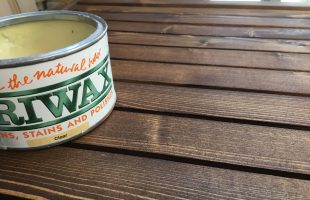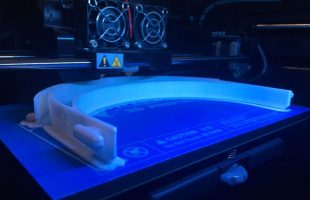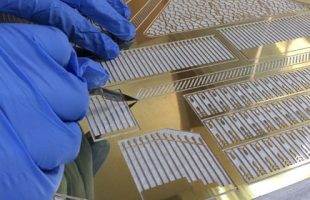A basic introduction to 3d printing for Architectural model making
What is 3d printing?
3d printing is a form of digital fabrication. It is a form of additive manufacturing which means that it builds solid objects through layering up material.
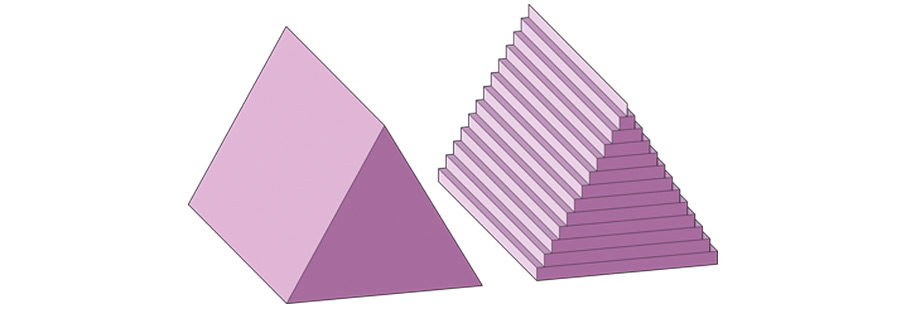
Here is an example of the layering process of additive manufacture. The object on the left is the original virtual model, and the image on the right shows how the object is created using layers. Different printers use different thicknesses which allow a more accurate and better finish to the object.
Consideration
Almost anything can be printed (within reason) however there are some basic principles to acknowledge beforehand:
1. Do you need to 3d print? It is not just a matter of pressing print and having an instant response. The process takes time whether it’s modelling the object in 3d or waiting days for the object to physically print. The whole process can take anywhere between a day and several weeks depending on the complexity of the model and the amount of preparation needed.
2. 3d printing has its limitations. Technological advances means that 3d printing is always developing and is getting better. It is advised that the user should consider the limitations when printing in 3d.
3. All models have to be a solid object to be able to print. There is software such as Netfabb Basic which checks whether or not the object is printable or not. The checking process can take several attempts to make sure the object is printable.
4. A digital model is not always optimised for 3d printing. It maybe that the object needs to be modelled differently to how it is modelled for other uses.
Technology
There are 3 main types of 3d printing and the processes they use to create objects. The most common techniques are FDM, SLA and SLS. The chart below explains the differences between them:

FDM (Fused deposition modelling):
The FDM technology works using a coil of filament (either plastic or metal). The filament is unwound from the coil through an extrusion nozzle. The nozzle is heated to melt the material. The melted material is then applied by layers. Each layer hardens immediately after extrusion from the nozzle. Support structure is automatically generated if and when required.
FDM was invented by Scott Crump in the later 1980s. He patented the technology and shortly founded the company Stratasys in 1988. The term FDM is a trademark of Stratasys Inc. Similar abbreviations such as FFF (Fused Filament Fabrication) was introduced by other companies to avoid legal issues.

Up! 3d printer uses FDM technology
SLA (Stereolithography):
The SLA process uses ultraviolet lasers to cure a vat of liquid resin to form the 3d print. The object is built in layers. For each layer the laser traces a cross section of the part pattern on the surface of the liquid resin. Exposure to the ultraviolet laser light cures and solidifies the pattern traced on the layer below.
After the pattern has been traced, the printer bed descends layer by layer. A resin-filled blade sweeps across the cross section of the part, re-coating it with fresh material. On the new liquid surface, the subsequent layer pattern is traced, joining the previous layer.
SLA technique requires the use of support structures which attach to the model and require cleaning up afterwards. The SLA technique was invented in 1986 by Charles Hull, who also at the time founded the company, 3D Systems.
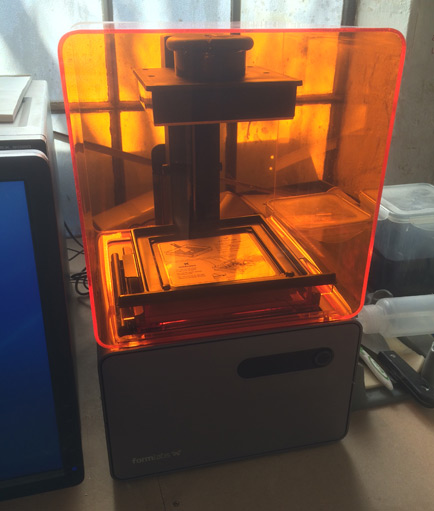
Formlabs SLA printer
SLS (Selective laser sintering):
SLS is similar to SLA however it is the most expensive form of printing. The SLS printer uses high energy lasers to solidify a powder material. The lasers selectively fuse sections of the powder together before another layer is added. The lasers make another pass to fuse the single layer of powder to the already solid layer below.
This method of printing allows total support for the print therefore almost any imaginable shape can be printed, The SLS printers can use any material that is capable of being powdered and fused with heat, e.g thermoplastics,steel, aluminium, titanium.
This method of printing allows strong and durable printed parts suitable for mechanical engineering.
Layer height and resolution in SLS printing is completely determined by the resolution of the powder being fused, but is typically on par with SLA printing, averaging around .1mm layer heights.

SLS powder printer
There are other 3d printing technologies, though they are not as commercially used as the above 3.
DLP (Digital light processing)
DLP is a similar process to stereolithography in that it work with photopolymers. The main difference is the light source. DLP uses a more conventional light source such as a lamp with a crystal display panel which maps the entire surface in a single pass. DLP is therefore generally cheaper than stereolithography as there is less waste and lower running costs.
LOM (Laminated object manufacturing):
LOM takes thin materials such as paper or plastic sheets, cuts them into a specific shape and uses adhesive to glue one layer to the next. Full colour prints can be achieved with the colour inkjet printhead inside. This method of printing is very cheap due to the inexpensive raw materials that can be used.
CJP (Colour Jet Printing):
CJP technology involves using two major components, a core and a binder. The core material is spread in thin layers over the build platform with a roller. Once all the layers have been spread, a colour binder is released from an inkjet printer head over the core layer. This causes the core material to solidify.
Materials
It is possible to 3d print with a wide range of materials however the main materials for printing are as follows:
Plastics:
The majority of printers currently on the market use plastic material due to the low cost.
PLA, which stands for Polylactic acid is an environmentally friendly, biodegradable thermoplastic. It is derived from renewable resources such as corn starch and sugar cane.
ABS, stands for Acrylonitrile butadiene styrene. This is the material which the printer at paul davis + partners uses. It is very safe and strong and is used for a wide range of uses such as car bumpers and lego.
PVA, stands for Polyvinyl Alcohol plastic and is very different from PVA glue. Popular 3d printers such as the Makerbot use PVA plastic.
Powders:
A lot of high end printers use powders for printing.
Polyamide is a strong and flexible material that allows a high detailed finish. Polyamide prints are constructed from white, very fine, granular powder.
Alumide is similar to Polyamide with its sandy and granular look. It is rigid and strong. Alumida prints are constructed from a blend of grey aluminium powder and polyamide.
Multicolor is a full colour material with a sandy and granular finish.
Other materials:
Titanium - Very light, strongest material but expensive. Printed using Titanium powder sintered together by a laser.
Stainless steel. - Printed using stainless steel powder which is infused with bronze material. Stainless steel is the cheapest metal to 3d print with.
Brass, Silver, Gold - printed using a wax mould which is then filled with the molten material
Ceramics - Shiny appearance, heat resistant, recyclable and food safe.
Resins - Design freedom is limited due to the structure needed to support the object during the printing process.
Printing within architectural model making

3d printed base and buildings
The model above was 3d printed as one piece, which included the baseboard, levels and buildings. As you can see, the water was printed in a blue colour to differentiate between the other parts of the model. Trees were added by hand.
Below, a 3d printed scaled house has been hand painted to achieve similar colours to the original house.
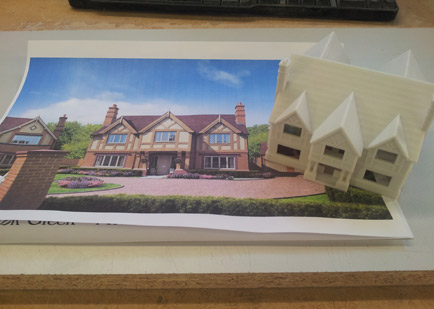
3d printed house
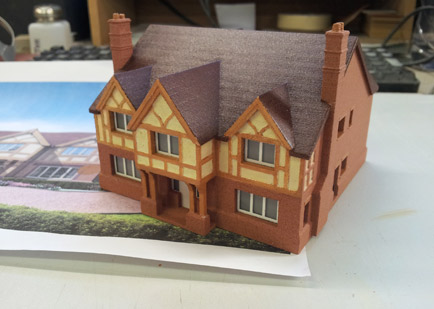
3d printed house painted
Printing whole buildings:
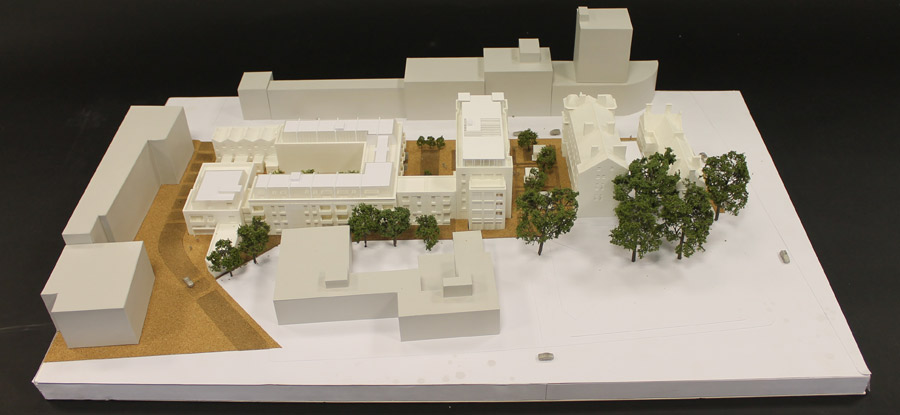
Chelsea Masterplan model by PDP London Architects
This model for Chelsea Masterplan (Site 1 & 2) was made in-house by PDP London and was used for various pre-apps. It took approximately 150 hours to print the scheme using FDM technology with ABS plastic. The time to prepare all the buildings for printing took up to 3 weeks (including re-modelling from scratch and editing existing digital models to be appropriate to print). The buildings took approximately 3 days in the bath to remove the support material and took over a week to completely dry.
The context buildings and baseboard were made by hand. The perspex roofscapes were added to the 3d printed buildings as they needed to be transparent. Trees and figures were added to the 1/250 model to complete.
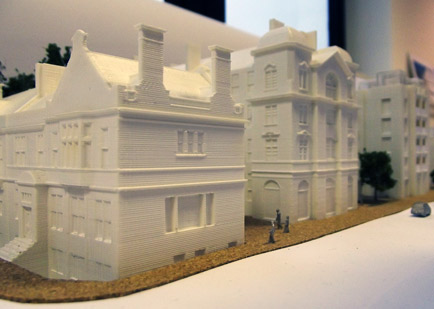
Close-up of Chelsea Masterplan 3d print by PDP London

Close-up of Chelsea Masterplan 3d print by PDP London
A similar model for another site (3 & 4) of their Chelsea Masterplan scheme was constructed in the same way. However whereas site 1 & 2 was printed as solid blocks, site 3 & 4 was printed as separate facades which slotted together. This allowed the buildings to be printed quickly. Depending on the orientation of the print, it may use up more support material doing it this way and in turn will need longer in the bath.
Printing Parts
The model below was constructed for the development of Canary Wharf and sits in the Canary Wharf Management marketing suite. The Tower which was designed by KPF used various techniques included laser cutting and 3d printing.

Architectural model at Canary Wharf
Once the laser cut floors and cores were stacked and assembled, glazing was wrapped around in sections. The outer stone layer was constructed using 3d printed parts which were sprayed and applied to the tower.
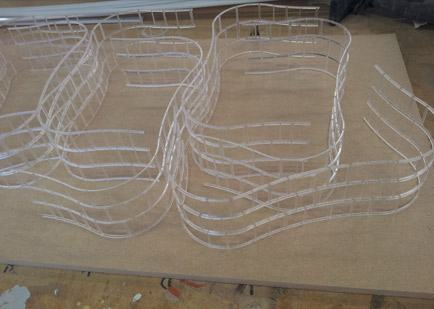
Stone layer printed in sections

Printed parts sprayed up
3d printing on a larger scale
This building is the World’s tallest 3d printed building. The 5 storey residential apartment block has been built by a construction firm in Shanghai.
The building has been printed with terracotta brick-like exterior.
They wanted to explore a “futuristic idea for a fully sustainable city in the desert and reveal the safest cities in the world.”

3d printed 5-storey residential apartment

3d printed 5-storey residential apartment
The tallest 3d printed building is currently on display at Suzhou Industrial Park, along with a 1,100-square-meter 3D-printed neoclassical mansion (Pictured below).
Both buildings were made with a patented “ink” created from a mixture of recycled construction waste, coursed through a 150-meter long printer. This is the same technology that the company demonstrated last year when it printed 10 affordable single-story houses in 24 hours, (Image bottom right) a feat that captured the imagination of architects, humanitarian aid agencies, and governments looking for alternative housing solutions.
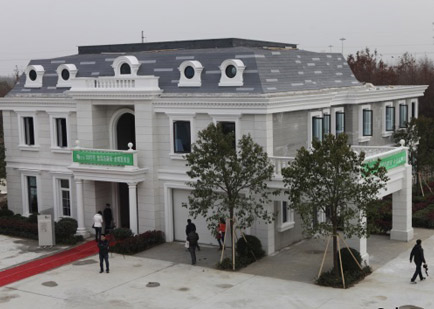
3d printed neoclassical mansion
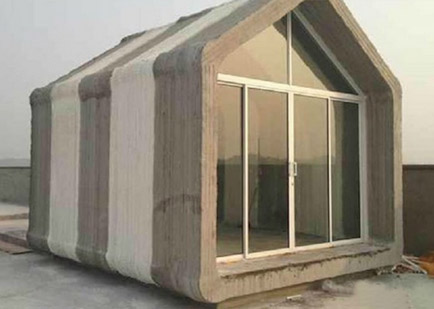
one-room house by WinSun Decoration Design Engineering
WinSun Decoration Design Engineering printed and assembled 10 one-room houses in just 24 hours. Each building, which was around 650 square feet, cost only around $4,800 to make. What’s more, WinSun used recycled construction waste and cement.
The company used four 3D printers that stand 20 feet tall, and are 33 feet wide and 132 feet long.






